Art Deco


Characterized by luxury, glamour, and bold geometric patterns with a strong sense of symmetry.
Uses rich, vibrant colors like black, gold, silver, emerald, navy, and deep red.
Incorporates high-end materials such as marble, lacquer, glass, chrome, and mirrored finishes.
Features sleek, glossy surfaces and sharp lines mixed with curves and stylized motifs.
Furniture is elegant and bold, often with glossy wood, metallic trims, or exotic veneers.
Decor elements include sunbursts, zigzags, chevrons, and fan shapes inspired by the 1920s and 1930s.
Creates a sophisticated, dramatic atmosphere that blends modernity with opulence.
Contemporary


Evolved from modernist principles, emphasizing simplicity, openness, and functionality.
Uses clean, straight lines, open spaces, and subtle geometric forms that feel fresh and uncluttered.
Favors a neutral color palette—whites, greys, beiges, and blacks—often accented with bold or earthy tones for contrast.
Features smooth surfaces, sharp edges, and matte or natural finishes on furniture and built-ins.
Incorporates modern materials like glass, steel, concrete, and natural woods.
Decor is minimal and purposeful, often highlighting statement pieces or artwork.
Creates a calm, elegant atmosphere that feels current, refined, and timeless.
Uses clean, straight lines, open spaces, and subtle geometric forms that feel fresh and uncluttered.
Favors a neutral color palette—whites, greys, beiges, and blacks—often accented with bold or earthy tones for contrast.
Features smooth surfaces, sharp edges, and matte or natural finishes on furniture and built-ins.
Incorporates modern materials like glass, steel, concrete, and natural woods.
Decor is minimal and purposeful, often highlighting statement pieces or artwork.
Creates a calm, elegant atmosphere that feels current, refined, and timeless.
Asian Décor


Uses a harmonious, nature-inspired palette—warm woods, soft neutrals, bamboo greens, inky blacks, and touches of deep red or gold.
Combines clean lines, balanced symmetry, and organic materials like wood, stone, paper, and silk to evoke calm and connection.
Emphasizes purposeful design and spatial flow, often guided by principles like feng shui and the balance of yin and yang.
Decor is minimal yet meaningful—ceramics, bonsai, calligraphy, or handcrafted screens that reflect culture, craftsmanship, and serenity.
Spaces feel meditative, grounded, and intentional, with an emphasis on stillness, light, and natural textures.
Creates a tranquil, reflective atmosphere that values simplicity, mindfulness, and a deep respect for nature and tradition.
Bohemian
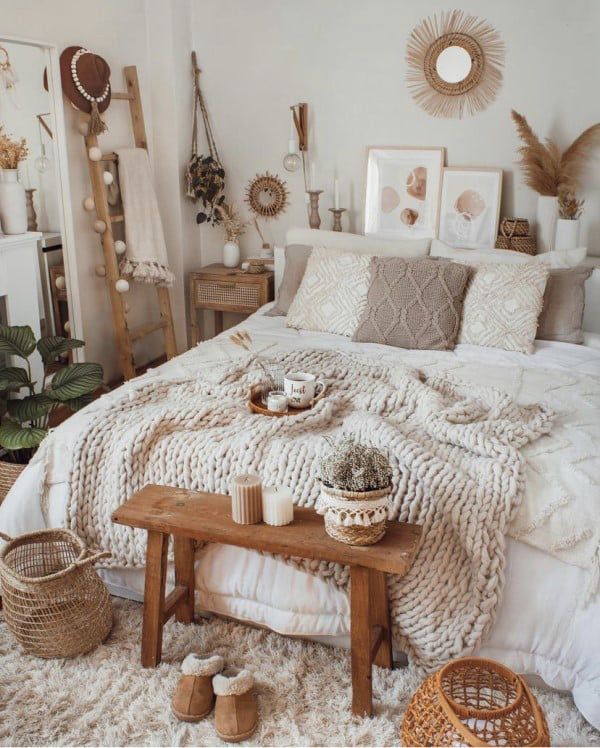

Embraces a free-spirited, eclectic mix of cultures, colors, and textures.
Uses rich, earthy tones combined with bold jewel colors like deep reds, purples, and oranges.
Features layered textiles—rugs, throws, pillows, and tapestries—often with global or tribal patterns.
Furniture is often vintage, mismatched, or handcrafted, creating a relaxed and personal feel.
Incorporates natural elements like wood, rattan, plants, and woven baskets.
Spaces feel cozy, creative, and collected over time, not overly planned or structured.
Decor is full of personality—art, books, candles, lanterns, and souvenirs from travel are common.
Coastal


Inspired by the beach and sea, aiming to create a light, breezy, and relaxed atmosphere.
Uses a soft color palette of whites, creams, sandy beiges, with accents of blues and seafoam greens.
Incorporates natural materials like light wood, rattan, linen, cotton, and jute.
Emphasizes natural light with sheer curtains, open spaces, and large windows.
Furniture is casual and comfortable, often slipcovered or made with weathered finishes.
Decor includes nautical touches like rope, driftwood, shells, and marine-inspired art.
Creates a calm and airy space that feels open, fresh, and connected to the ocean.
Eclectic


Combines elements from different styles, time periods, and cultures to create a unique and personal space.
Uses a mix of colors, textures, and patterns—often layered but carefully balanced.
Furniture can be modern, vintage, or global, with varying shapes and finishes.
Art, textiles, and accessories are curated to reflect individuality and storytelling.
Color palettes vary widely but are usually grounded by a few unifying tones or materials.
Spaces feel collected over time, with intentional contrast between old and new, bold and subtle.
Creates a vibrant, expressive atmosphere that celebrates creativity, contrast, and personal taste.
Modern


Evolved in the early to mid-20th century, emphasizing function, clarity, and simplicity.
Uses clean lines, minimal ornamentation, and geometric forms that focus on structure and purpose.
Favors a natural and neutral color palette—whites, beiges, browns, and earthy tones—often complemented with natural textures.
Features smooth surfaces, flat planes, and an emphasis on horizontal and vertical lines.
Incorporates natural materials like wood, leather, stone, and metals in their pure forms.
Decor is minimal, focusing on craftsmanship, form, and open spaces rather than decorative elements.
Creates a warm, balanced atmosphere that feels timeless, uncluttered, and functional.
Uses clean lines, minimal ornamentation, and geometric forms that focus on structure and purpose.
Favors a natural and neutral color palette—whites, beiges, browns, and earthy tones—often complemented with natural textures.
Features smooth surfaces, flat planes, and an emphasis on horizontal and vertical lines.
Incorporates natural materials like wood, leather, stone, and metals in their pure forms.
Decor is minimal, focusing on craftsmanship, form, and open spaces rather than decorative elements.
Creates a warm, balanced atmosphere that feels timeless, uncluttered, and functional.
French Country


Blends rustic charm with elegant, old-world sophistication inspired by the countryside of Provence.
Uses a soft, warm color palette—creamy whites, muted blues, soft yellows, sage greens, and natural tones.
Features distressed wood, stone, and wrought iron mixed with refined details like carved moldings and curved furniture.
Furniture is graceful and vintage-inspired, often with cabriole legs, antique finishes, and upholstered details.
Decor includes ceramic pitchers, baskets, fresh flowers, and rustic chandeliers or lanterns.
Creates a cozy, romantic atmosphere that feels timeless, inviting, and gently worn-in.
Tropical


Evolved from coastal and island living, emphasizing freshness, relaxation, and a strong connection to nature.
Uses organic shapes, airy layouts, and natural textures that evoke a breezy, open atmosphere.
Favors a vibrant yet soothing color palette—whites, beiges, and sandy neutrals accented with lush greens, turquoise, coral, or sunny yellows.
Features natural surfaces, rattan or wicker furniture, and light woods like bamboo or teak.
Incorporates materials such as linen, cotton, jute, and woven fibers for a soft, casual feel.
Decor includes lush plants, tropical prints, and natural elements like shells or driftwood.
Creates a light, refreshing atmosphere that feels warm, inviting, and in harmony with the outdoors.
Uses organic shapes, airy layouts, and natural textures that evoke a breezy, open atmosphere.
Favors a vibrant yet soothing color palette—whites, beiges, and sandy neutrals accented with lush greens, turquoise, coral, or sunny yellows.
Features natural surfaces, rattan or wicker furniture, and light woods like bamboo or teak.
Incorporates materials such as linen, cotton, jute, and woven fibers for a soft, casual feel.
Decor includes lush plants, tropical prints, and natural elements like shells or driftwood.
Creates a light, refreshing atmosphere that feels warm, inviting, and in harmony with the outdoors.
Japandi
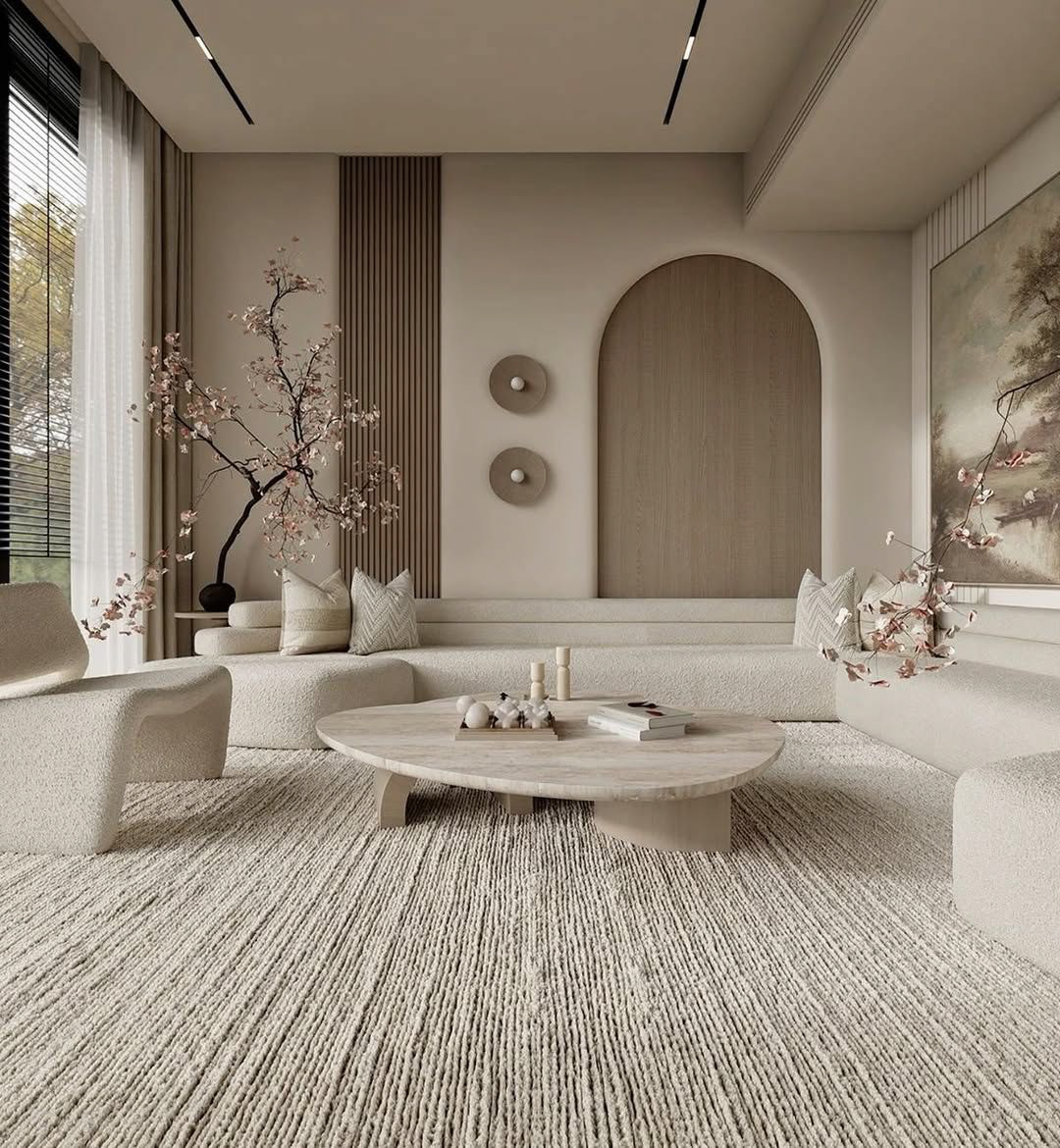

Uses a neutral, calming palette—beige, taupe, soft greys, and muted earth tones, with occasional black accents.
Combines clean lines, low-profile furniture, and natural materials like wood, stone, linen, and bamboo.
Embraces negative space and intentional design, with each object serving a clear purpose.
Decor is minimal and functional, often handmade, reflecting craftsmanship and authenticity.
Spaces feel peaceful, uncluttered, and balanced, blending the wabi-sabi philosophy with cozy, Nordic comfort.
Creates a serene, grounded atmosphere that values quality, nature, and calm living.
Maximalist
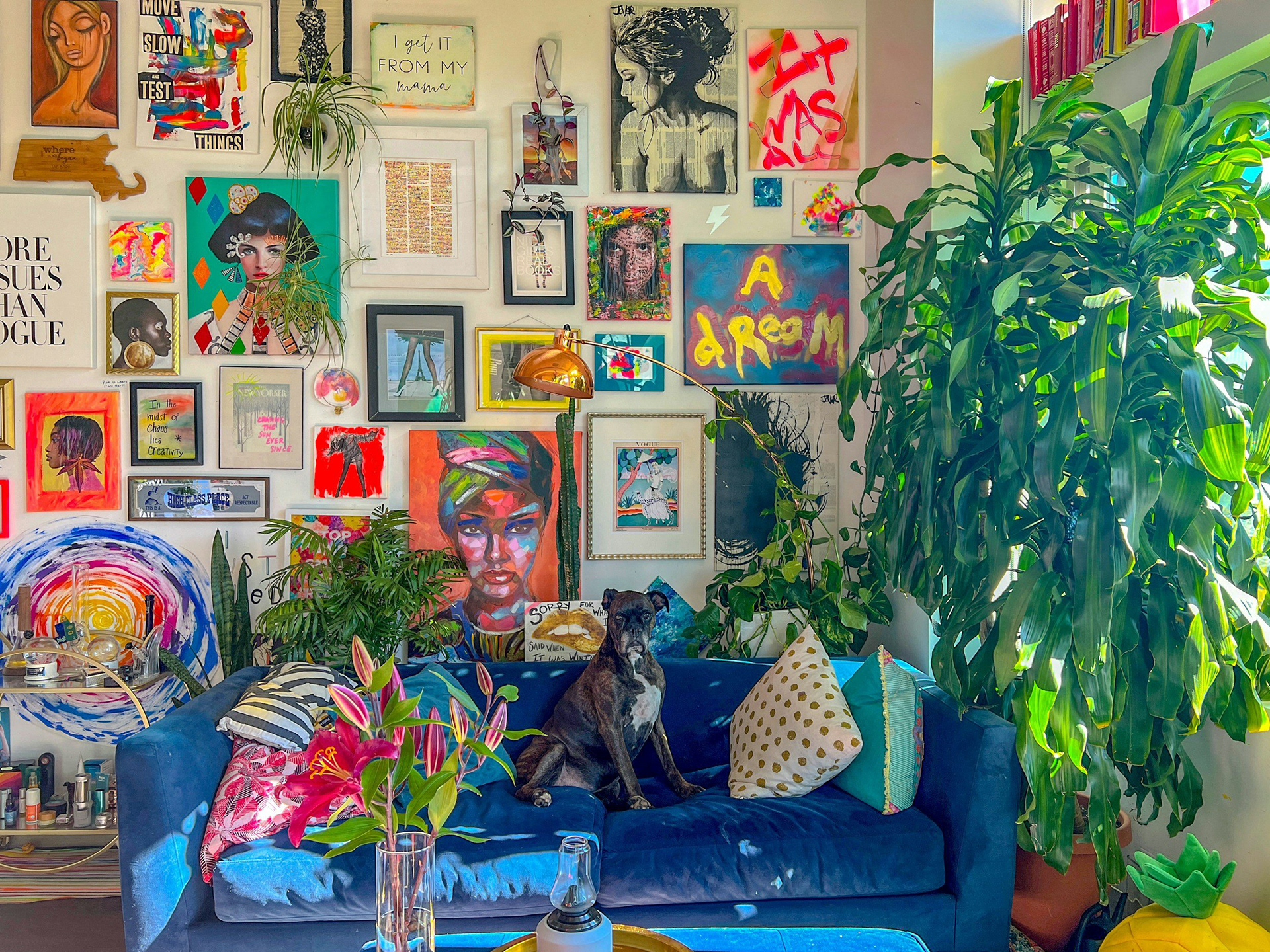

Celebrates abundance and bold self-expression through layers of color, pattern, and texture.
Uses a wide and vibrant color palette, often combining contrasting hues.
Features mixed prints, rich fabrics, and decorative details across walls, furniture, and accessories.
Embraces eclecticism, combining different styles, eras, and cultural influences in one space.
Furniture and decor are often ornate, expressive, and collected over time.
Walls may be filled with art, books, mirrors, or gallery-style arrangements.
Creates a rich, energetic, and personalized space that feels curated and full of life.
Mediterranean

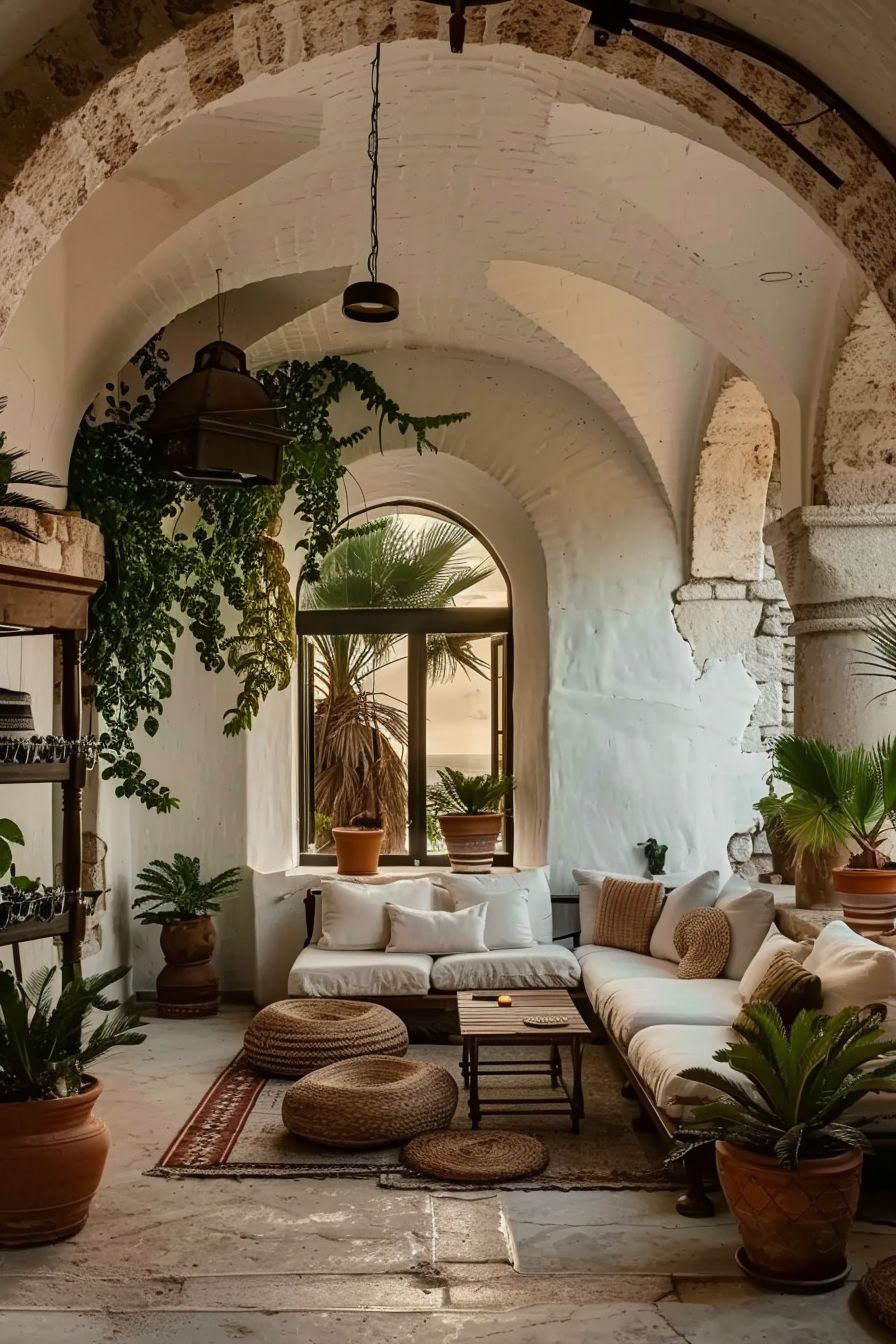
Uses a warm, sun-drenched palette—terracotta, olive green, sandy beige, and deep ocean blues, with accents of rustic iron and aged wood.
Blends curved architecture, arched doorways, and textured walls with natural materials like stucco, stone, ceramic, and weathered timber.
Celebrates indoor-outdoor living with open layouts, shaded patios, and breezy, light-filled rooms designed for connection and rest.
Decor is earthy and artisanal—woven textiles, handcrafted pottery, mosaic tiles, and wrought iron details that tell stories of tradition.
Spaces feel timeless, soulful, and welcoming, rooted in heritage yet relaxed in spirit.
Creates a lived-in, sun-kissed atmosphere that values nature, craftsmanship, and everyday beauty.
Memphis


Known for its bold, playful, and unconventional aesthetic born in the 1980s.
Uses bright, clashing colors like neon pink, turquoise, yellow, and black-and-white patterns.
Features abstract shapes, squiggles, zigzags, and asymmetrical forms throughout furniture and decor.
Combines unexpected materials like plastic laminate, terrazzo, chrome, and glossy finishes.
Furniture is sculptural and graphic, often blurring the line between art and function.
Design rejects minimalism and traditional rules, embracing fun, irony, and exaggeration.
Creates a vibrant, energetic atmosphere that feels rebellious, creative, and pop-culture-inspired.
Mid-Century


Designs are minimal and practical, focused on usability and comfort.
Characterized by straight lines, gentle curves, and geometric or organic forms.
Frequent use of wood, leather, metal, glass, and plastic in combination.
Large windows and open floor plans create harmony with nature.
Beauty comes from form and material, not decoration.
Neutral backgrounds are paired with pops of mustard, teal, orange, and olive green.
Use of new technologies and mass-produced materials like molded plastic and bent plywood.
Minimalist


Clean, uncluttered spaces that focus only on what’s essential.
Commonly uses white, grey, beige, and black, sometimes with soft muted tones.
Straight edges, smooth surfaces, and simple geometric shapes.
Practical and often multi-use pieces with no decorative extras.
Emptiness is intentional to create a calm and spacious feel.
Relies on large windows and soft lighting; avoids heavy curtains or visual clutter.
Few items, but each is chosen for its craftsmanship and lasting value.
Modern Farmhouse


Blends rustic charm with clean, modern lines for a cozy yet updated look.
Uses a neutral color palette—whites, greys, taupes, and soft earthy tones.
Features natural materials like wood, metal, and stone with distressed or weathered finishes.
Furniture is comfortable and practical, often oversized with slipcovers or wood accents.
Spaces feel warm and lived-in, with layered textures like cotton, wool, and linen.
Decor includes vintage or repurposed items, barn-style doors, open shelving, and black metal fixtures.
Combines simplicity with warmth, creating a casual, inviting atmosphere rooted in country comfort.
Neo-Industrial
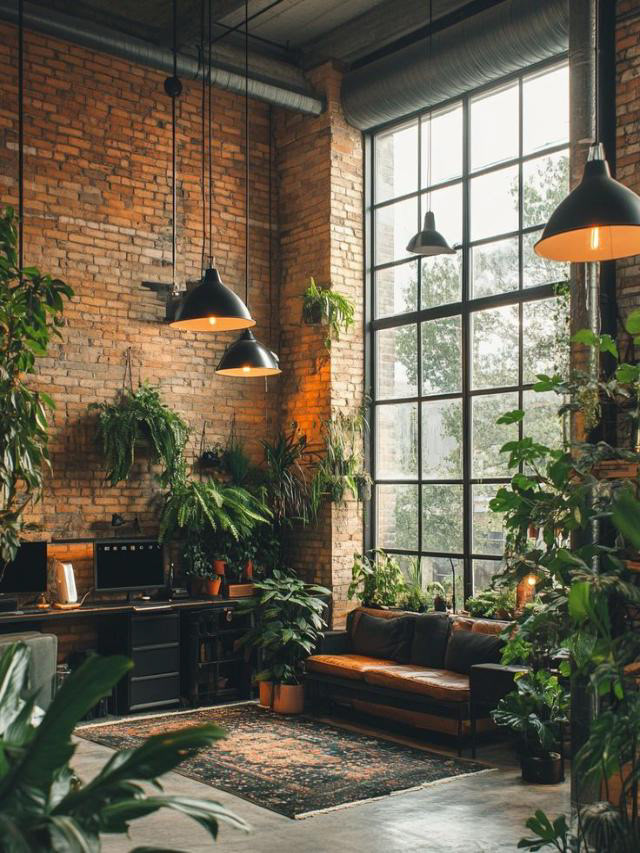

Modern take on classic industrial design, blending raw materials with sleek, contemporary finishes.
Features exposed elements like brick walls, concrete floors, steel beams, and ductwork.
Uses a neutral and moody palette—greys, blacks, deep browns, and matte metallics.
Incorporates refined touches such as clean-lined furniture, polished surfaces, or minimal styling.
Lighting often includes statement pieces like black metal pendants, Edison bulbs, and track systems.
Combines rough textures like reclaimed wood and raw steel with modern materials like glass and smooth metals.
Creates a bold, urban, and edgy feel while maintaining comfort and functionality.
Regency
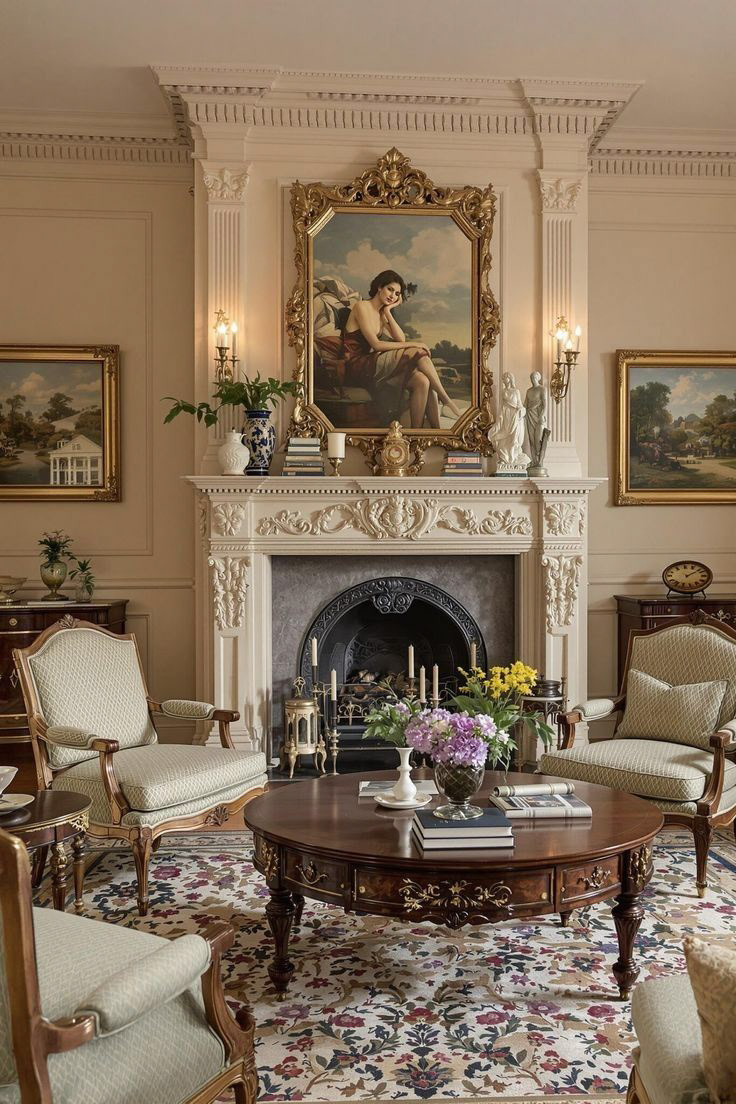

Characterized by glamour, elegance, and a dramatic sense of luxury with a modern twist.
Uses bold color palettes like black, white, gold, deep blues, and rich jewel tones.
Features high-gloss finishes, lacquered furniture, and mirrored or metallic surfaces.
Incorporates classical influences such as Greek key patterns, busts, and columns.
Furniture is ornate but sleek, often with curved lines, tufting, and rich upholstery like velvet or satin.
Decor includes statement lighting, crystal chandeliers, oversized mirrors, and gold accents.
Creates a sophisticated, theatrical atmosphere that blends old Hollywood charm with bold contemporary style.
Rustic


Uses a warm, earthy palette—rich browns, weathered greys, creamy whites, and muted greens, often accented by natural patinas and aged metals.
Combines rugged textures, raw materials, and sturdy forms—think reclaimed wood, stone, leather, linen, and iron.
Celebrates imperfection and authenticity, with handcrafted details, exposed beams, and timeworn finishes that tell a story.
Decor is functional and soulful—vintage finds, handmade pottery, cozy textiles, and heirloom-quality pieces full of character.
Spaces feel grounded, cozy, and inviting—designed for comfort, connection, and a deep sense of home.
Creates a warm, lived-in atmosphere that values craftsmanship, nature, and timeless simplicity.
Scandinavian

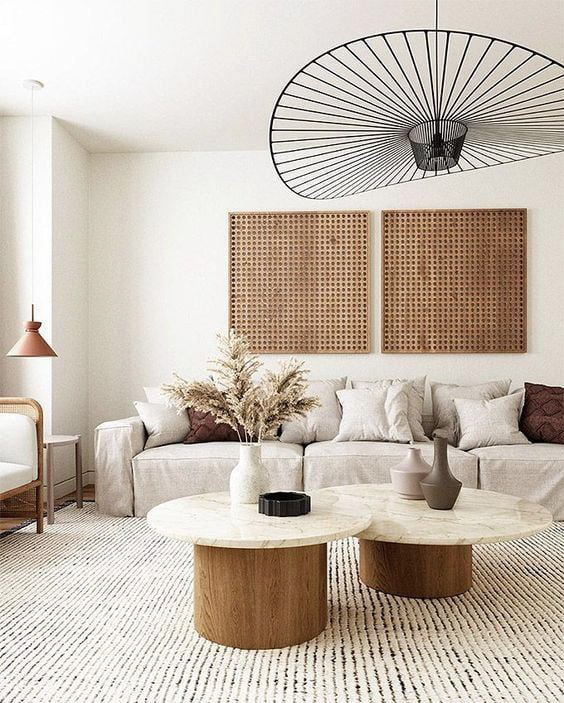
Focuses on simplicity, comfort, and functionality rooted in everyday living.
Uses light color palettes, especially white, pale wood, and soft neutrals to enhance brightness.
Incorporates natural materials like wood, wool, leather, and linen to add warmth.
Spaces are clean and minimal but feel cozy and lived-in, often described as “hygge.”
Furniture is practical, with gentle curves and slim, tapered legs.
Maximizes natural light with large windows, sheer curtains, and uncluttered layouts.
Blends modern and traditional elements to create timeless, balanced interiors.
Shabby chic


Combines vintage charm with a soft, romantic feel through worn and distressed elements.
Uses a muted color palette—mainly whites, creams, pastels, and soft florals.
Furniture often appears aged or repurposed, featuring chipped paint and antique finishes.
Incorporates feminine details like lace, ruffles, floral patterns, and curved silhouettes.
Mixes old and new items to create a cozy, lived-in atmosphere.
Decor includes vintage accessories, mirrors, chandeliers, and delicate fabrics.
Focuses on comfort and nostalgia, aiming for a relaxed yet elegant look.
Urban Style


Evolved from modern city living, emphasizing functionality, raw materials, and a chic, metropolitan vibe.
Uses clean lines, open spaces, and bold contrasts to reflect the energy of urban environments.
Favors a neutral color palette—greys, blacks, whites, and earthy tones—often accented with pops of bold color like red, yellow, or teal.
Features sleek surfaces, exposed structures (like beams or pipes), and mixed materials such as concrete, steel, brick, and reclaimed wood.
Incorporates contemporary furniture with minimalist silhouettes and practical storage solutions.
Decor blends industrial elements with modern art, large statement pieces, or city-inspired motifs.
Creates a stylish, edgy atmosphere that feels cosmopolitan, creative, and effortlessly cool.
Uses clean lines, open spaces, and bold contrasts to reflect the energy of urban environments.
Favors a neutral color palette—greys, blacks, whites, and earthy tones—often accented with pops of bold color like red, yellow, or teal.
Features sleek surfaces, exposed structures (like beams or pipes), and mixed materials such as concrete, steel, brick, and reclaimed wood.
Incorporates contemporary furniture with minimalist silhouettes and practical storage solutions.
Decor blends industrial elements with modern art, large statement pieces, or city-inspired motifs.
Creates a stylish, edgy atmosphere that feels cosmopolitan, creative, and effortlessly cool.
Transitional


Uses a balanced, neutral palette—soft greys, warm whites, taupe, and espresso, often accented with subtle blues or metallics.
Blends the warmth of traditional design with the clean simplicity of contemporary—combining classic forms with streamlined finishes.
Focuses on balance and comfort, with tailored furniture, layered textures, and a mix of timeless and modern materials like wood, glass, and brushed metals.
Decor is refined yet approachable—statement lighting, simple patterns, and curated accessories that bridge past and present.
Spaces feel cohesive, elegant, and inviting—neither overly ornate nor stark, but comfortably in between.
Creates a calm, polished atmosphere that values versatility, subtle sophistication, and enduring style.
Urban Modern


Uses a sleek, muted palette—charcoal, black, soft greys, and crisp whites, often contrasted with warm woods or bold accent colors.
Combines clean architectural lines, industrial elements, and modern finishes—think concrete, steel, glass, and reclaimed wood.
Embraces open spaces and minimalist styling, with statement furniture that blends comfort and edge.
Decor is bold yet curated—oversized art, sculptural lighting, and unique pieces that reflect personality and city energy.
Spaces feel dynamic, stylish, and effortlessly cool—designed for modern living with an urban sensibility.
Creates a refined, expressive atmosphere that values creativity, contrast, and contemporary design.
Wabi Sabi

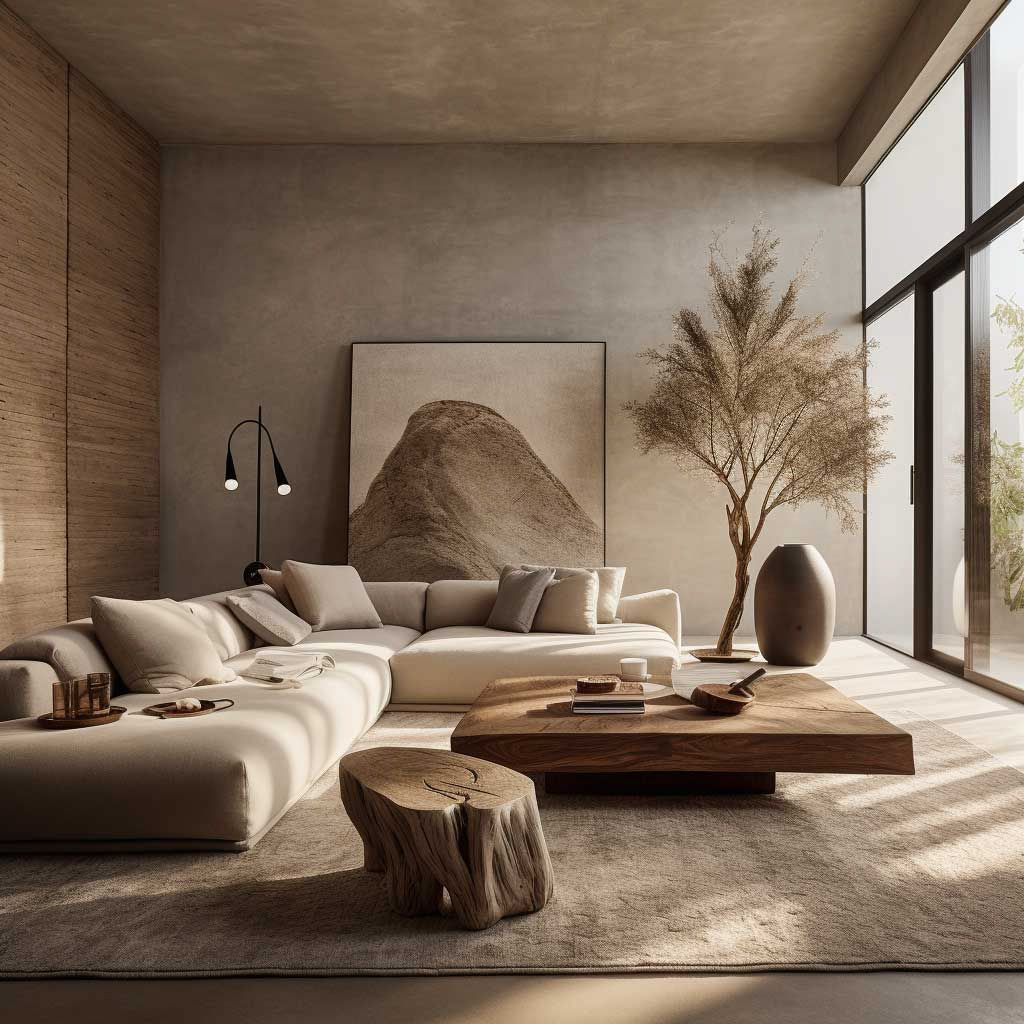
Rooted in Japanese philosophy, emphasizing imperfection, simplicity, and the beauty of natural aging.
Uses organic forms, asymmetry, and raw textures to create a sense of authenticity and serenity.
Favors an earthy color palette—warm neutrals, soft browns, muted greens, and greys inspired by nature.
Features unfinished surfaces, handcrafted furniture, and natural materials like wood, stone, clay, and linen.
Incorporates patina, weathered finishes, and subtle irregularities that celebrate time and impermanence.
Decor is minimal yet meaningful, often including handmade pottery, natural fibers, and rustic elements.
Creates a calm, grounding atmosphere that feels soulful, intimate, and connected to nature.
Uses organic forms, asymmetry, and raw textures to create a sense of authenticity and serenity.
Favors an earthy color palette—warm neutrals, soft browns, muted greens, and greys inspired by nature.
Features unfinished surfaces, handcrafted furniture, and natural materials like wood, stone, clay, and linen.
Incorporates patina, weathered finishes, and subtle irregularities that celebrate time and impermanence.
Decor is minimal yet meaningful, often including handmade pottery, natural fibers, and rustic elements.
Creates a calm, grounding atmosphere that feels soulful, intimate, and connected to nature.

